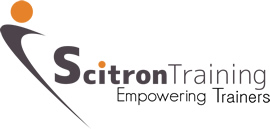This article outlines the steps in project management and provides a framework of sequential action for the manager undertaking a project. Project management is recognised as a special process which differs in approach from general management or change management. The traditional project management focus has been that of completing defined work within given time constraints and cost limits. Recently the focus has shifted more to the quality of the final output delivered to the customer.
Definition of project management
"Project management is a specialised management technique to plan and control projects ... A project is generally deemed successful if it meets pre-determined targets set by the client, performs the job it was intended to do, or solves an identified problem within the pre-determined time, costs and quality constraints." - Burke.
Benefits of project management
Project management techniques provide:
An appropriate way to bring about sudden, revolutionary or purposive change
A suitable approach for handling one-off tasks
A realistic method for evaluating a new scheme
Problems with project management
Projects:
Often require an extraordinary use of resources - especially money and people - over a finite period of time
Usually consume more resources than foreseen
Can go over schedule by significant margins
Project Management steps and action checklist
1. Define the objectives
Fundamental to the management of any successful project are both understanding and agreement of:
what is required to be achieved
what is to be the outcome and/or delivered as a result
dates and budgets for project completion by both project sponsor and project manager
Lack of clear objectives will doom the project from the beginning.
2. Appoint the Project Manager
The project manager must be someone who has a proven track record, can command respect from a mix of seniorities and can get action from them. They should be able to:
plan and communicate all aspects of the project
motivate with integrity, sensitivity and imagination
gain productivity and trust from shared decision-making
lead both by example and by taking a back seat when appropriate
monitor costs, efficiency and quality without excessive bureaucracy
get things done right first time without being a slave-driver
get the right people for the right task at the right time
use both technical and general management skills to control the project
see clear-sightedly through tangled issues
3. Establish the Terms of Reference
The Terms of Reference specify the objectives, scope, time-frames and initial scale of resource required. They should also clarify any risks, constraints or assumptions already identified. It is important to make any early allowances for cost escalation, plans veering off course, and build in a level of contingency, or safety margin.
4. Construct the Work Breakdown Structure Document (WBSD)
Having established what the project should achieve, next consider how to achieve it.
The WBSD forms the basis of much subsequent work in planning, setting budgets, exercising control and assigning responsibilities. The key is to break the project down into identifiable phases, then into controllable units for action. Dividing a piece of work into more approachable, discrete units facilitates the functions of estimating, planning and controlling. As soon as possible allocate time- scales to each unit of work, taking care to allow for both sequential units - those that need to be accomplished before the next can be tackled, and overlapping units - those that can run in tandem.
5. Plan for quality
Planning for quality requires both attention to detail and ensuring that the project output or outcome doe swhat it is supposed to,or is "fit for its purpose".The work break down structure should incorporate"micro" performance criteria or indicators, for discrete units or phases, and "macro"indicators against which the final outcome can be assessed. Quality measures (systematic inspections against established standards) should be built into the process from the beginning, not later when things (may)have started to goawry.
The formula:establish standards - monitor performance - take corrective action can run as a continuous sequence throughout the project duration. The key is to ensure effective quality assurance which acts as a prevention rather than a cure and enables you to get things right first time.
6. Plan costs
A key area in which the most frequent error is to under-estimate costs. Typical cost elements include:
staff time and wages - usually the most substantial cost item of all
overheads - employer on-costs
materials and supplies - the raw materials
equipment - the pros and cons of leasing or purchasing and the factor of depreciation
administration - purchasing, accounting, record-keeping
One of the enabling functions of a good budget is to monitor costs while a project is in progress.
7. Plan time-scales
In order to calculate the shortest time necessary to complete the project you need to know:
the earliest time a stage or unit can start
the duration of each stage and proper time management
the latest time by which a stage must be completed.
Gantt charts, PERT diagrams and Critical Path Analysis are prominent amongst several project management techniques which can help with effective planning of time-scales
8. Monitor and report progress
The monitoring of in-progress costs, time-scales and quality is a major factor for consideration throughout the duration of the project. Quality is the hardest to measure and, as such, prone to neglect.
In addition to progress reports, feedback sessions and Management By Walking About, there are various control tools which help check that implementation is going according to plan.
Control Point Charts ask you what is likely to go wrong in terms of time, cost and quality
Project Control Charts provide status reports of actual costs against budget with variances
Milestone Charts are a means of showing stages of achievement as steps towards the project objectives
It is important to know what to do when these, or other, control mechanisms indicate that something is going wrong. Contingency plans are also vital, as goal posts are always prone to movement.
9. Deliver the output
Haynes writes that "the goal of project management is to obtain client acceptance of the project result". Steps before delivery of the project outcome may include the compilation of instructional documentation or training packages. The penultimate stage before project completion is ensuring that the outcome of the project is accepted by the customer or sponsor.
10. Evaluate the project
By building in a final stage of evaluation it is possible to gain a measure of the project's success and see what lessons can be learned. Once again, the three key areas for review are quality, time and costs. Others
include:
staff skills gained or identified
mistakes not to be repeated
tools and techniques that were valuable
what would be tackled differently
Dos and don'ts of project management
Do
Take time at the beginning on objectives, terms of reference and the work breakdown structure
Ensure, as far as possible, access to resources needed
Appoint someone with the right skill-mix as project manager
Don't
Let small changes creep in without assessing the implications
Omit to build in quality checks
Lose sight of time targets and budget limits
Further reading
Successful Project Management in a Week, 2nd ed.
Mark Brown
London: Hodder and Stoughton, 1998
Project Management, 6th ed.
Dennis Lock
Aldershot: Gower, 1996
Project Management: Strategic Design and Implementation, 2nd ed.
David I Cleland
New York: McGraw Hill, 1994
Project Management Planning and Control, 2nd ed.
Rory Burke
Chichester: John Wiley, 1993
Handbook of Project-based Management: Improving the Processes for Achieving Strategic Objects
J Rodney Turner
Maidenhead: McGraw Hill, 1992
Some project management software suppliers
Arena Software Ltd
Cambridge
Tel: 01223 464194
Goldcrest Computer Services Ltd
Milton Keynes
Tel: 01908 211330
Microsoft Ltd
Reading
Tel. 0345 002000
PSDI (UK) Ltd
Woking
Tel: 01483 727000
Thought starters
Think of a job or task you have to do.
Does it have a set start and finish date?
Does it require a budget?
Does it need other resources: people, equipment, raw materials?
Does it involve changing something?
Does it have a clear objective or target?




















